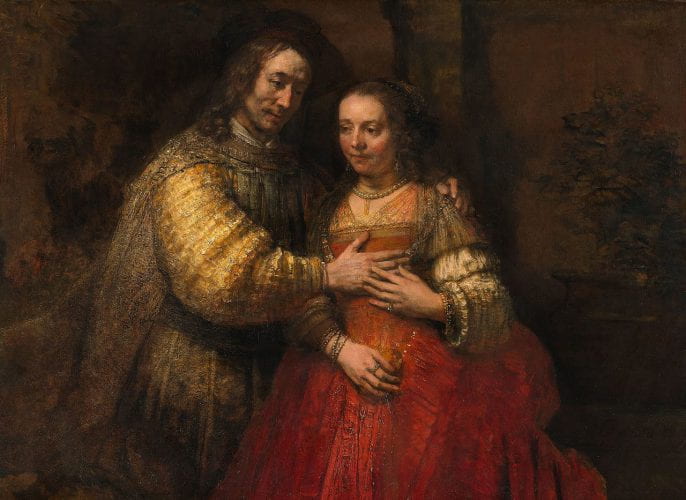Since women and men differ in so many ways, why not expect differences in how and why they form kidney stones?
They do differ, and in ways that can matter as we try to prevent new stones and think about what is most likely to work best for each.
The haunting and beautiful “Isaac and Rebecca”, Known as ‘The Jewish Bride’, Rembrandt van Rijn, c. 1665 – c. 1669, oil on canvas, hangs in the Rijksmuseum, Amsterdam. Despite many speculations as to the subjects, including the biblical one at the museum site, experts have failed to reach a consensus.
Old News
We have known a few differences for a while now, so before I tell you what is new let’s remind ourselves about the past.
Women have a higher urine pH than men do, because they absorb more alkali from their food. That is not just because of sex hormones. For example, it persists after menopause. Pregnancy is a stone forming state, and stones raise pregnancy risks. Because of their more alkaline urine, women form kidney stones containing a higher percentage of calcium phosphate crystals, and these stones pose special problems because often larger and more numerous than the common calcium oxalate stones.
New News
The sex difference differs between calcium oxalate and calcium phosphate stone formers. In other words, the sexes differ differently depending on their stone types.
You might say all this slicing and dicing can’t mean much to patients or their physicians, but it is not we who are slicing and dicing, nature did it, and we need to understand it and use it to our advantages.


Hi Doc:
do we know anything about the effects of hormone i.e estrogen/progesterone therapy post-menopausal (elderly) women/stone formers with hypercalciuria?
Hi Kim, I would suppose that hormone replacement therapy would help prevent bone disease and stones, but know of no studies. Regards, Fred Coe